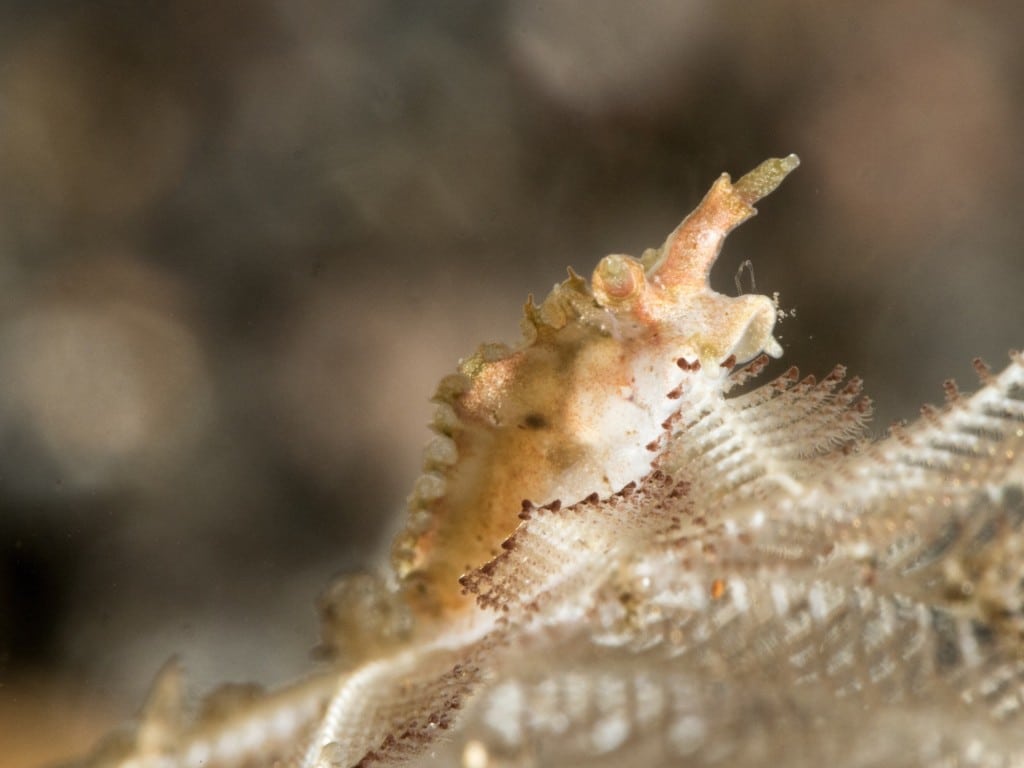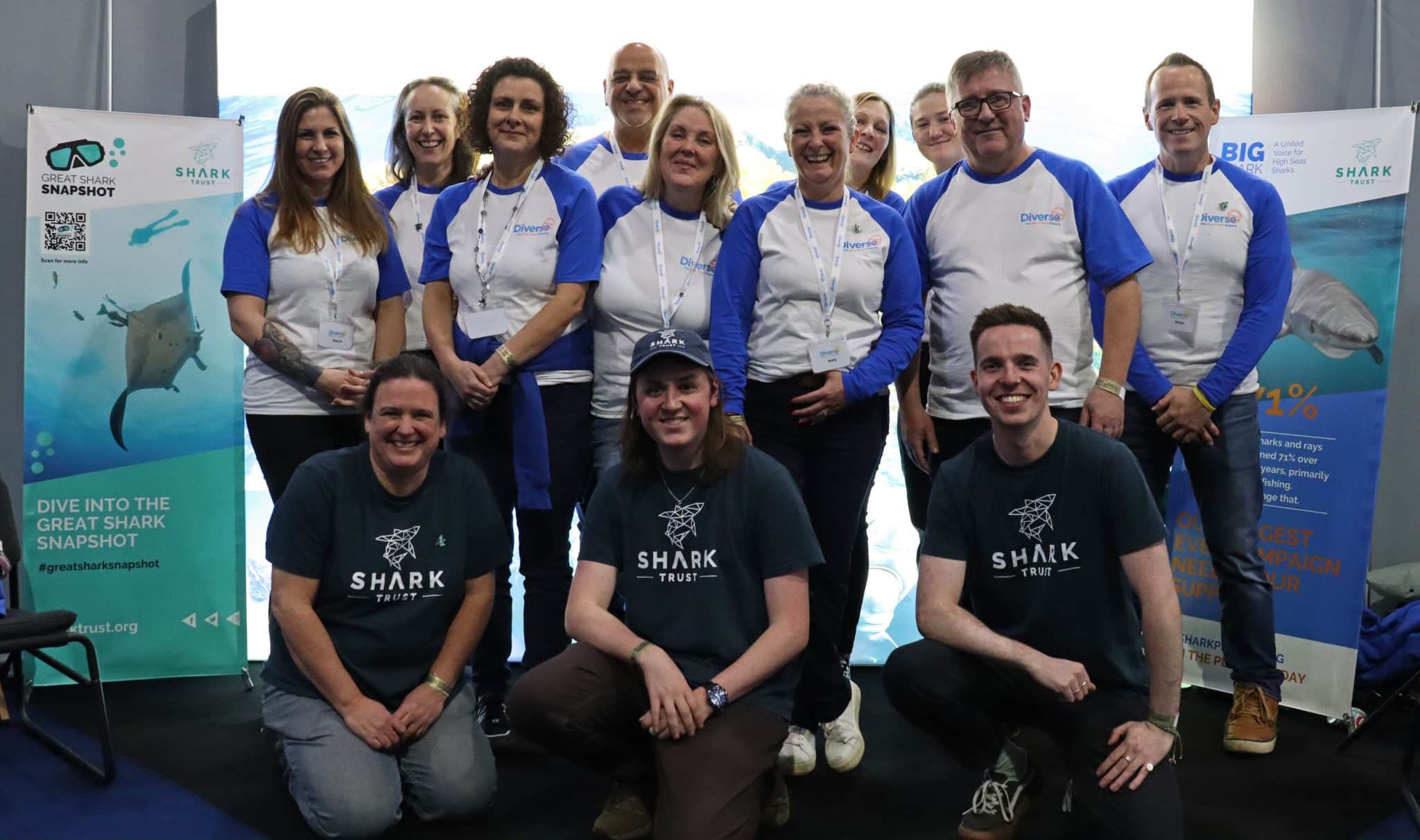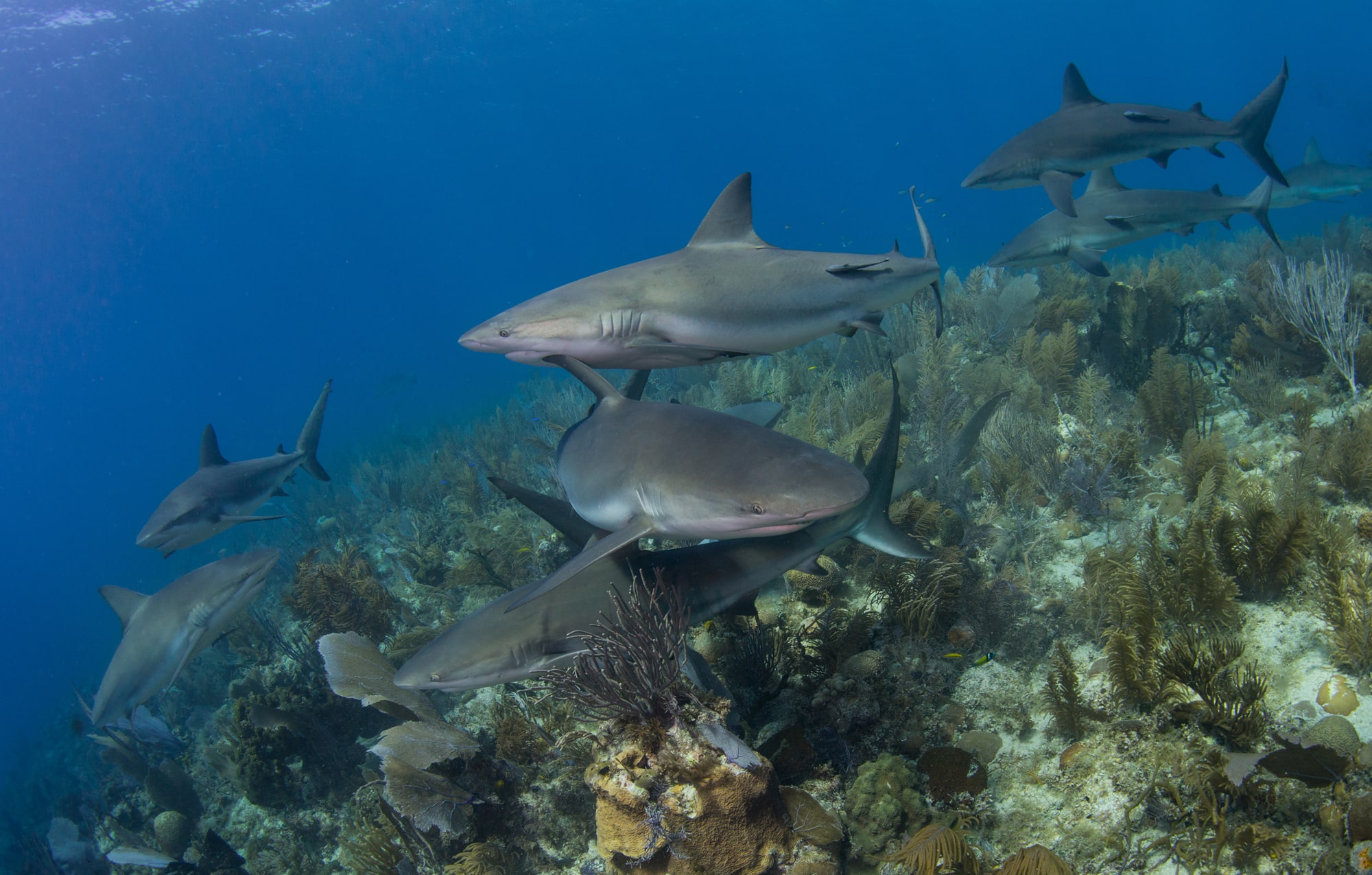Marine Life & Conservation
Photographing Responsibly: A Beginner’s Guide

Next time you’re diving with an experienced underwater photographer, take a moment to really look at how they conduct themselves and their placement in the water. Notice anything in particular? You might notice how they hover over the reef, sand or muck without disturbing a single grain, rock or soul. You might also notice how effortlessly they glide through the water and how still they perch when stalking their subject. To many new photographers, this might seem totally impossible but all it takes is a few simple tricks and some practice.
If you’re in the water and photographing the coral scapes or wildlife, chances are it’s because you find the behaviours intriguing or see a beauty in the environment that you want to capture and share. If you’re a new or less experienced photographer, you may also be experiencing some of the challenges around maintaining buoyancy and managing your equipment, all while trying to approach and photograph a subject.
It’s imperative as divers that we protect and maintain these marine environments, leaving them as if we were never there. The ocean is the largest ecosystem and supports the largest volume and variety of life on earth. Not to mention that oceans contribute a large volume of the air we breathe, the food we eat and reduce the impact of climate change by absorbing carbon dioxide from the atmosphere. Pretty impressive, right?
In this blog I want to share with you four key lessons I have learnt that have improved the way I dive, the quality of the photographs I produce, and the way I’ve learnt to minimise my impact on the dive sites I visit.
1: Be selective with your gear
Every photographer suffers from the fear of missing out. It’s always the way, you set up your macro lens and see a great wide angle scene. You set up for wide angle and find a rare and beautiful nudibranch. It can be tempting to take down every diopter you own, your snoot, a mirror… the works.
In reality, this can be really distracting and ultimately get in your way. If you’re fussing with gear constantly, you will find it harder to get into a rhythm with your shots and also run the risk of losing pieces of expensive equipment if you’re constantly screwing, unscrewing, clipping and unclipping. Less is definitely more!
I was shooting cryptic teardrop crabs with my fluorescent kit last year. My strobes, focus light, mask and lens all had special filters to capture the beautiful phenomenon. While shooting the crabs, I found a clown crab. Unfortunately, it wasn’t possible to capture him using the fluoro gear. By the time I removed the filters and fussed with my mask, he was long gone. Not to mention, I had four pieces of expensive equipment sitting on the sand next to me, in the dark, that I had to reassemble onto my camera. You can easily see how this could have ended badly.

It’s much easier, especially when you’re newer to underwater photography, to focus on one style of shot and stick with it. Make a plan using the technique you’d like to master and focus your energy on getting shots you’re really proud of. One great shot is always more satisfying than dozens of ‘I wish I’d done’ shots. Look at the masters, you’ll notice that they keep things simple and focus on one thing at a time. Coincidence? I think not!
Most importantly and to the spirit of this piece, if you’re constantly distracted with your gear, you may not be paying as much attention as you should to your buoyancy and placement in the water. Before you know it, you’ve got a fin or a hand somewhere it doesn’t belong. Constantly evaluating where your body is, in relation to the reef or muck, is critically important to protecting yourself from stings and bites as well as protecting the critters and corals around us.
Really, limiting yourself to a few essentials produces the best outcome for you as a photographer and allows you the mental space to become more aware of your surroundings.
2: Make sure you’ve got your buoyancy just right
When you buy your first underwater camera, it can be tempting to jump right in and get shooting. Unfortunately for the majority of us, mastering buoyancy can be a real challenge and doesn’t come right away.
To get the most out of your photography, having control of your breathing and limbs is essential to get the best shots. Correct buoyancy improves the way you approach a subject and reduces motion blur you introduce through the movement of your body from constant kicking and erratic breathing. Not to mention that if you can control your breath and body movements your air will last longer, allowing you more bottom time for shooting.
Mastering your buoyancy, most importantly, allows you to hover over the reef, sand or muck you are trying to photograph with minimal impact on the environment. Plus, you will be a better dive buddy (no one likes the person who kicks sand!).
My advice is to have your buoyancy mastered and under control before you consider getting in the water with a camera. Get the basics right before you try and add another level of complexity to your underwater experience.
While you’re mastering your buoyancy, use your time without distraction wisely. Observe specific behaviours you may find interesting to shoot in the future, try and understand the reef scape and the places your favourite critters love to hide out. After all, knowing where to look and recognising interesting behaviours can ultimately deliver some incredible shots.
3: Check and check again
When you’ve found a subject you want to photograph, stop and take a moment to evaluate where it is and what’s around it. It might be tempting to start shooting immediately, however taking an extra moment before you get stuck in will make a big difference to your comfort underwater and ensuring that you are leaving no sign of your presence behind.
Is your subject on the sand? It might be tempting to see a sandy bottom near a subject and assume you’ve got the all clear. Take a quick moment to think about what could be really well camouflaged or even buried in the sand. Depending on where you’re diving, eels, scorpion or stone fish could be lurking just below the surface. Do a visual inspection of the area, look for tell-tale holes and mounds of sand which could indicate the presence of a living soul. Avoid these areas to ensure you’re not disrupting any wildlife or running the risk of stings and injury to yourself. If you believe the area is clear, use a metal diving stick and gently run it over the sand as a final measure.

Is your subject on the reef? This could be a trickier environment to navigate. Chances are you’re surrounded by soft or hard corals with a diverse range of marine life around you. If your only option is to hover above the subject, relying entirely on your buoyancy, check around you for any current and nearby coral or rocky structures. You don’t want current pushing you into these while you’re trying to shoot. Look up consistently between shots and adjust your position in the water frequently to ensure that you’re maintaining a safe distance between yourself, your subject and the reef.
If you’re lucky and there is some sand or bare rock near you, you can take advantage of these to anchor yourself. Again, visually inspect the area. If it looks clear, you can take two fingers and gently place them on the rock or sand in order to stabilize yourself and get the shot. If you are relying on a rock, really take the time to make sure there are no little critters living in the cracks and crevices.
My final advice is to talk to your dive guide or shop about any nasties you need to keep an eye out for or any critters that may be buried and lurking underneath the sand. It’s important to really understand the wildlife you are diving with to avoid any negative encounters.
4: Evaluate the risk
Really think about where your subject is located and evaluate whether you can realistically take the photograph without causing damage. You know and understand your own skills and abilities better than anyone else so be honest with yourself.
If you find a really beautiful nudibranch that you know is quite common… but sticking up in the air, surrounded by a large patch of soft corals, under an outcrop with strong current, really think to yourself if the shot is worth it. It may be better to wait for a subject that’s nicely facing you, out in the open or in a less densely populated area. You’ll get a better shot and mother nature will thank you for your consideration. No matter how great a shot can be, remember, safety first.

I hope you’ve found these tips useful. These are all lessons I’ve learned myself as I’ve started my journey with underwater photography. It isn’t always easy to do the right thing but in the long-term it’s worth thinking about the impact we have, as divers and photographers, on the environment.
Check out more of Miranda-Clare’s photos on Instagram @divingphotos or visit her website www.mirandaclare.com.
Marine Life & Conservation
Double Bubble for Basking Sharks

 The Shark Trust is excited to announce that, for two more days only, all donations, large or small, will be doubled in the Big Give Green Match Fund!
The Shark Trust is excited to announce that, for two more days only, all donations, large or small, will be doubled in the Big Give Green Match Fund!
Donate to Basking in Nature: Sighting Giants
The Shark Trust is hoping to raise £10k which will be doubled to £20k. This will go towards Basking in Nature: Sighting Giants. And they need YOUR help to reach they’re goal.
The Shark Trust’s citizen science project is to monitor and assess basking sharks through sightings; encouraging data collection, community engagement, and promoting nature accessibility. This initiative aims to enhance health and wellbeing by fostering a deeper connection with British Sharks.
Campaign Aims
- Increase citizen science reporting of Basking Sharks and other shark sightings to help inform shark and ray conservation.
- Provide educational talks about the diverse range of sharks and rays in British waters and accessible identification guides!
- Create engaging and fun information panels on how to ID the amazing sharks and rays we have on our doorstep! These can be used on coastal paths around the Southwest. With activities and information on how you can make a difference for sharks and rays!
- Promote mental wellbeing through increasing time in nature and discovering the wonders beneath the waves!
Donate, and double your impact. Click Here
Marine Life & Conservation
Leading UK-based shark conservation charity, the Shark Trust, is delighted to announce tour operator Diverse Travel as a Corporate Patron

 Corporate Patrons provide a valuable boost to the work of The Shark Trust. The Trust team works globally to safeguard the future of sharks, and their close cousins, the skates and rays, engaging with a global network of scientists, policymakers, conservation professionals, businesses and supporters to further shark conservation.
Corporate Patrons provide a valuable boost to the work of The Shark Trust. The Trust team works globally to safeguard the future of sharks, and their close cousins, the skates and rays, engaging with a global network of scientists, policymakers, conservation professionals, businesses and supporters to further shark conservation.
Specialist tour operator Diverse Travel has operated since 2014 and is committed to offering its guests high quality, sustainable scuba diving holidays worldwide. Working together with the Shark Trust will enable both organisations to widen engagement and encourage divers and snorkellers to actively get involved in shark conservation.
“Sharks are truly at the heart of every diver and at Diverse Travel, we absolutely share that passion. There is nothing like seeing a shark in the wild – it’s a moment that stays with you forever!” says Holly Bredin, Sales & Marketing Manager, Diverse Travel.
“We’re delighted to celebrate our 10th year of business by becoming a Corporate Patron of the Shark Trust. This is an exciting partnership for Diverse and our guests. We will be donating on behalf of every person who books a holiday with us to contribute towards their vital shark conservation initiatives around the world. We will also be working together with the Trust to inspire divers, snorkellers and other travellers to take an active role – at home and abroad – in citizen science projects and other activities.”
Paul Cox, CEO of The Shark Trust, said:
“It’s an exciting partnership and we’re thrilled to be working with Diverse Travel to enable more divers and travellers to get involved with sharks and shark conservation. Sharks face considerable conservation challenges but, through collaboration and collective action, we can secure a brighter future for sharks and their ocean home. This new partnership takes us one more valuable step towards that goal.”
For more information about the Shark Trust visit their website here.
For more about Diverse Travel click here.
-

 News3 months ago
News3 months agoHone your underwater photography skills with Alphamarine Photography at Red Sea Diving Safari in March
-

 News3 months ago
News3 months agoCapturing Critters in Lembeh Underwater Photography Workshop 2024: Event Roundup
-

 Marine Life & Conservation Blogs3 months ago
Marine Life & Conservation Blogs3 months agoCreature Feature: Swell Sharks
-

 Blogs2 months ago
Blogs2 months agoMurex Resorts: Passport to Paradise!
-

 Blogs2 months ago
Blogs2 months agoDiver Discovering Whale Skeletons Beneath Ice Judged World’s Best Underwater Photograph
-

 Gear Reviews2 weeks ago
Gear Reviews2 weeks agoGEAR REVIEW – Revolutionising Diving Comfort: The Sharkskin T2 Chillproof Suit
-

 Gear Reviews3 months ago
Gear Reviews3 months agoGear Review: Oceanic+ Dive Housing for iPhone
-

 Marine Life & Conservation2 months ago
Marine Life & Conservation2 months agoSave the Manatee Club launches brand new webcams at Silver Springs State Park, Florida






